4 lesser-known trails for your next green adventure
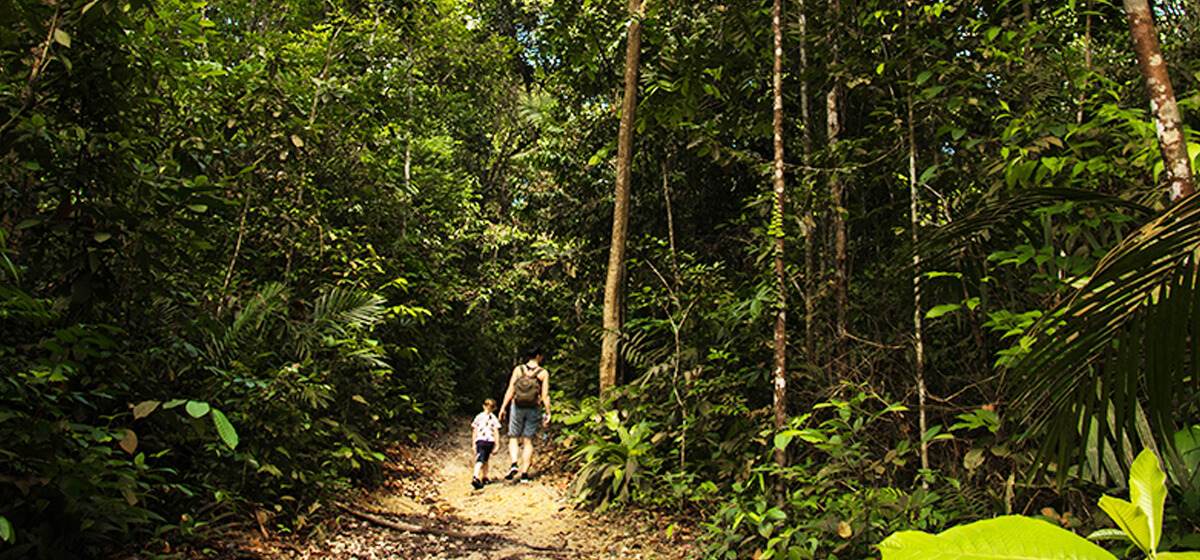
Singapore has a multitude of parks and nature reserves hidden amidst our concrete jungle. With more than 350 nature spots and a variety of forested hills and swampy wetlands, there is no lack of options to escape the hustle and bustle of the city and immerse in the natural beauty of our tropical island.
However, as we continue exploring these scenic routes in Singapore, are we ensuring that we are hiking sustainably? For our little red dot, each pocket of nature is carefully managed to conserve the area’s natural state, providing us much needed respite from our daily lives. We all have a part to play to preserve these green spaces for our future generations in the years to come.
One simple way to be eco-friendly is by visiting lesser-known parks and nature reserves to minimise the issue of overcrowding. By doing so, we reduce the stresses the more popular nature trails face and allow them more opportunities to regenerate.
As we approach the school holidays, we’ve put together four lesser-known nature walks in Singapore for your next adventure, together with easy tips to hike more mindfully and sustainably.
1. Tampines Eco Green
Tucked away in the heart of Tampines is a sprawling 36.5-hectare green sanctuary known as Tampines Eco Green. Resembling a rustic savannah with marshlands, secondary forests and freshwater ponds, the park is home to over a hundred species of birds, butterflies and dragonflies – perfect for those who enjoy spotting wildlife!
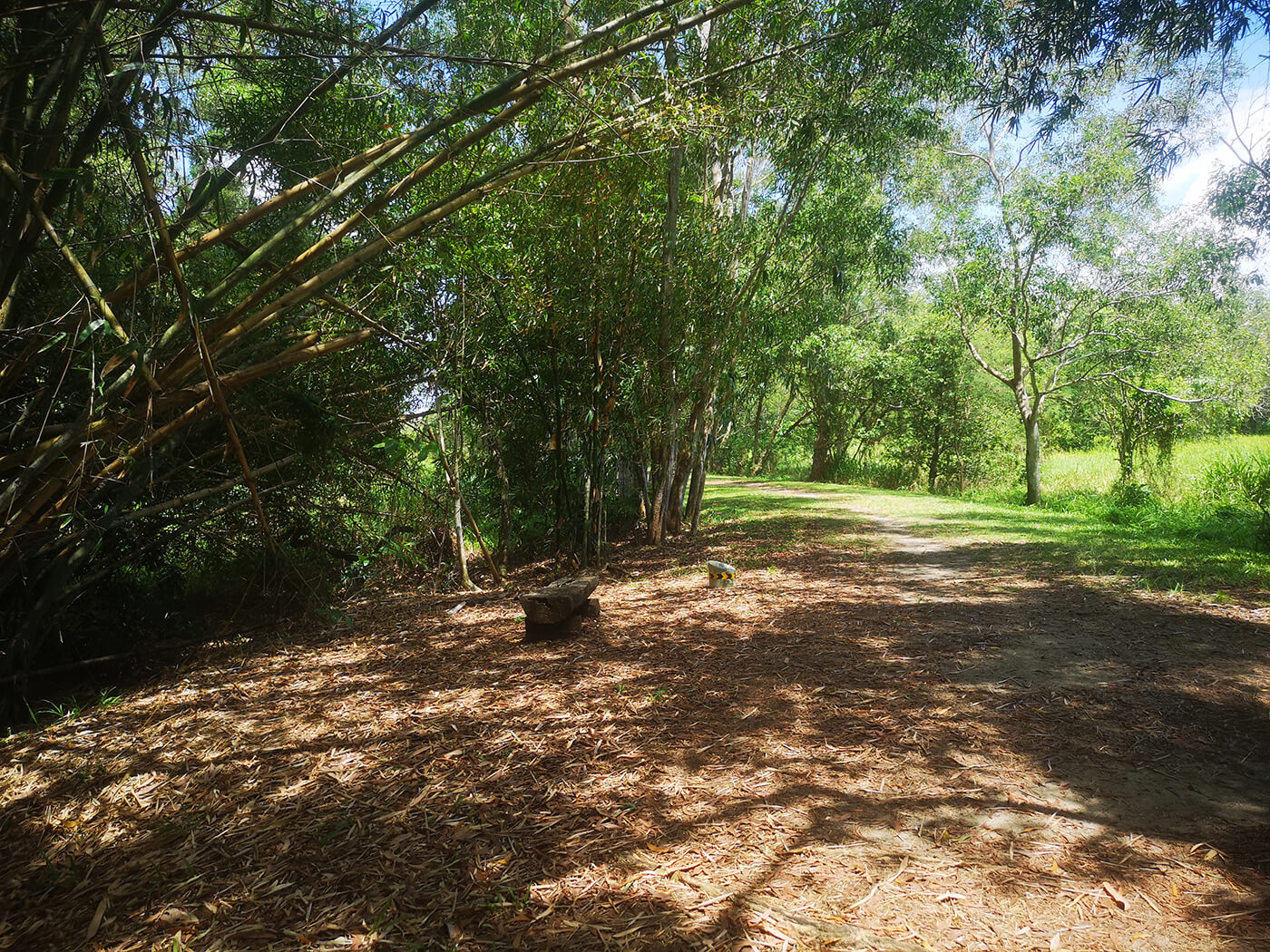
Tampines Eco Green prides itself as an ecologically conscious park that features an eco-toilet, vegetated swales, and bird hides. Everything from its sign boards to park furniture are made from recycled and eco-friendly materials! With three different trails – Diversity Trail, Forest Trail and Marsh Trail – to choose from, you’ll be sure to discover something new with each visit.
P.S. Do plan your visit earlier in the day as the park is not lit at night to minimise disturbance to the wildlife in the park.
Click here for directions on how to get there.
Green Tip: Stick to established trails when hiking
While we may be tempted to go off-trail and explore an untouched area of the park when you spot or discover something interesting, it is important to remember that we should still keep to the designated paths to avoid causing damage to the natural environment.
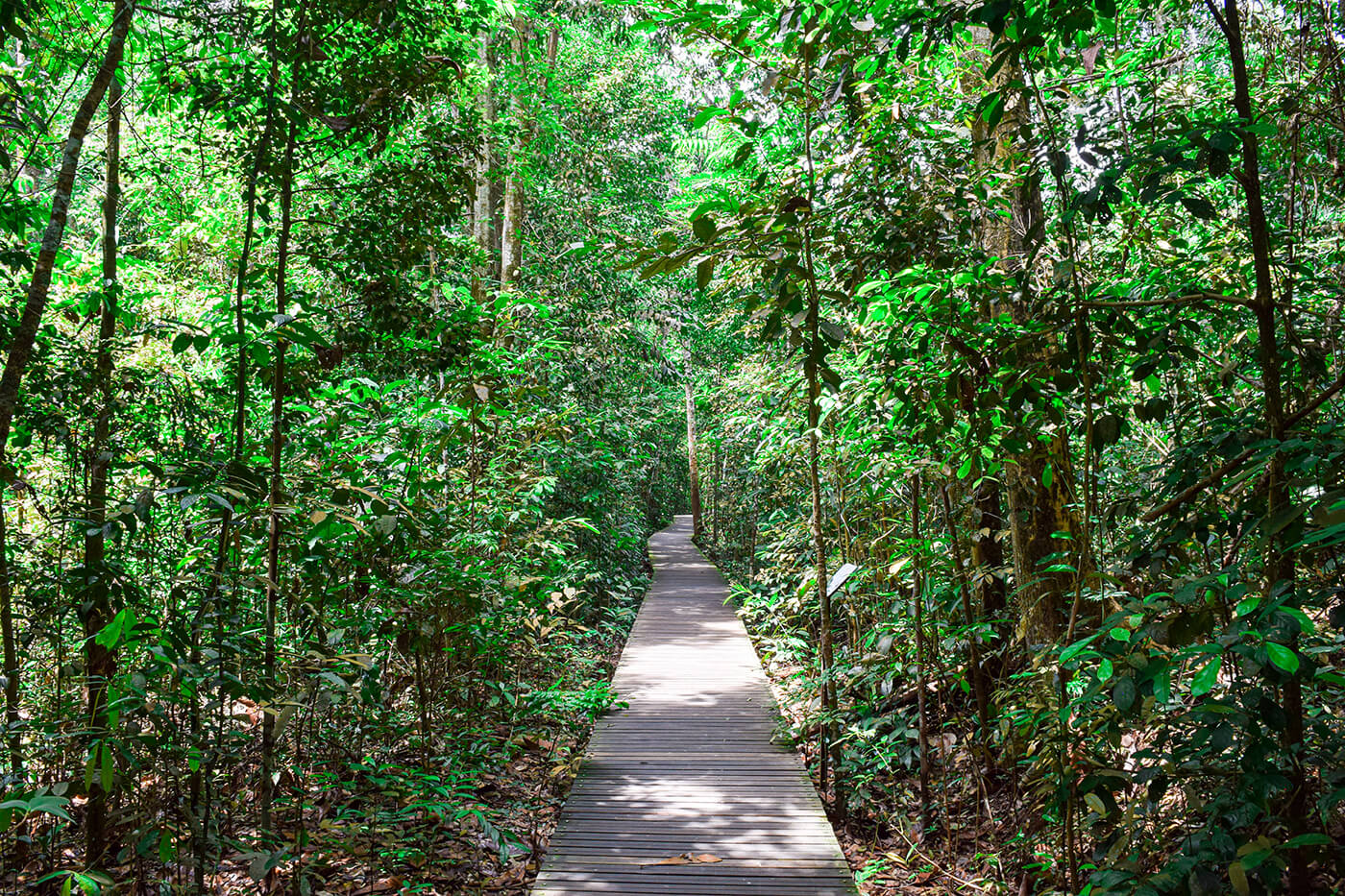
By being a non-intrusive hiker, this will not only help to protect the various species of flora and fauna but also minimise any unnecessary disruption into the lives of the wildlife.
2. North-Eastern Riverine Loop
Meandering through the Punggol district is the North-Eastern Riverine Loop that boasts beautiful views of glittering reservoirs and waterways. With a variety of birds, animals and plants that call it home, this park connector is an undeniable delight for nature lovers.
Spanning 26km, the North-Eastern Riverine Loop is perfect for anyone looking for a full day of exploration! What’s more, check out the various picturesque spots that can’t be missed including the Lorong Halus Bridge, Punggol Promenade Punggol Point Walk and Kelong Bridge. If you prefer to cycle, we’d recommend beginning your journey at Punggol Park where bicycle rentals are available.
Click here for directions on how to get there.
Green Tip: Do not feed the wildlife
While we may want to feed animals that we come across during our hikes out of compassion, doing so actually does more harm than good. Feeding wildlife alters their behaviour and may lead to them associating humans with food. This often results in undesirable consequences such as the animals grabbing food from passing individuals and losing their natural ability to hunt in the wild.
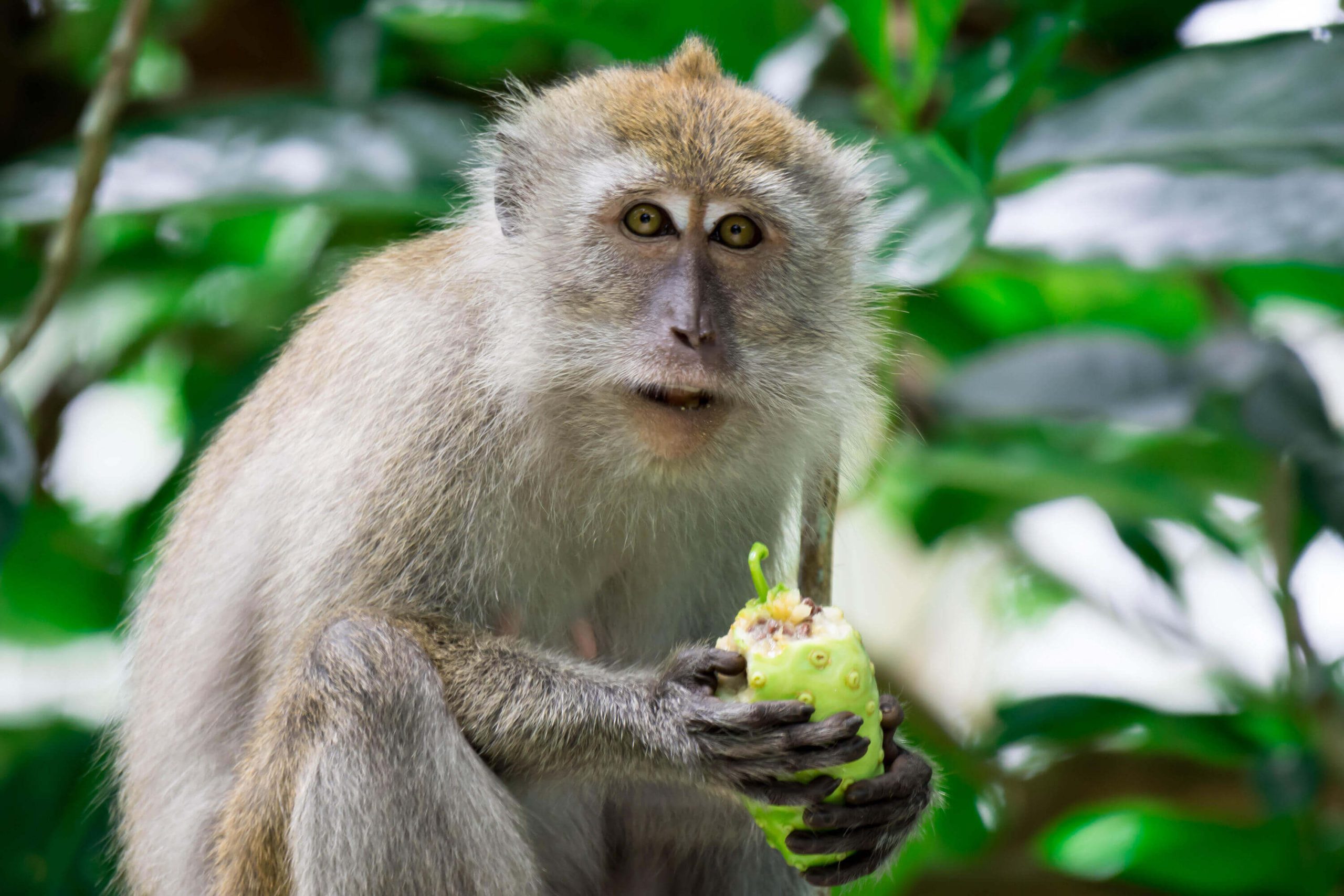
In more serious situations, these animals may gradually be viewed as pests and pressure may be put on the authorities to cull them. So, the next time you spot a cheeky macaque or colourful hornbill, refrain from feeding and simply admire them from afar. Better yet, a more sustainable option is to avoid bringing food along during your hikes. Not only will this help in reducing packaging waste, it will also minimise any potential unpleasant situations with the animals.
3. Jurong Lake Gardens
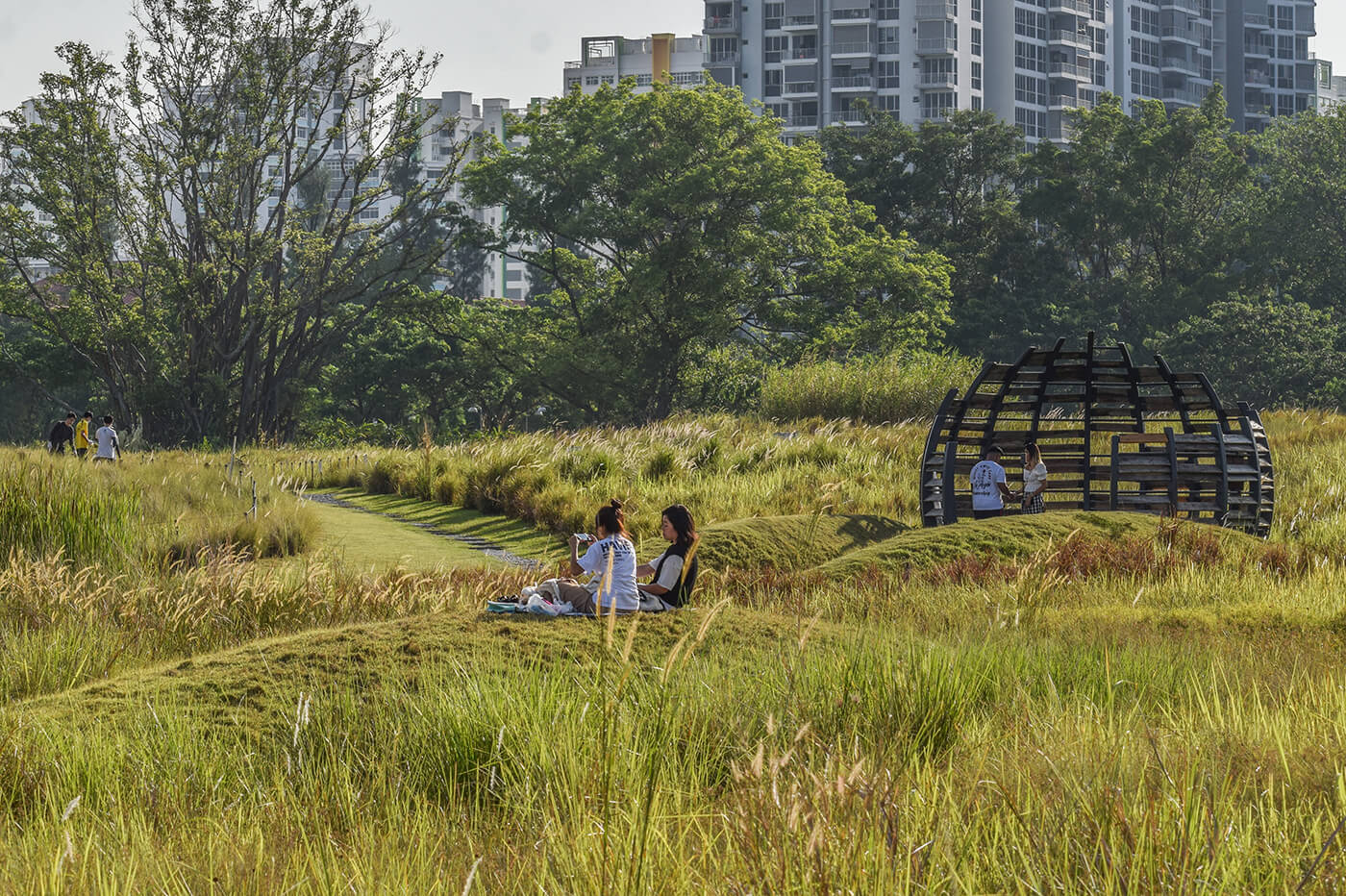
A tranquil lakeside destination, Jurong Lake Gardens is perfect for visitors to enjoy various natural landscapes including an expansive grassland, a freshwater swamp and of course, a freshwater lake.
If you’re an early riser, head down to the Jurong Lake Boardwalk just after the break of dawn to be rewarded with a charming sight of mists over the glassy lake.
Prefer to head down to the park later during the day? Take in spectacular views of the park on Rasau Walk that meanders over the water’s edge or immerse yourself amongst the towering Lalang-like grasses at the grasslands. For the latter, there is even a dome-shape structure where you can rest and observe nature in action! If you’re up for some water sports, check out PAssionWaVe @ Jurong Lake Gardens where a myriad of exciting water activities, such as paddle boating and kayaking, are offered.
Click here for directions on how to get there.
Green Tip: Keep your trash with you
The negative impact of littering goes beyond making our parks look unsightly. Litter, especially plastic, endangers our wildlife as they may mistake these items for food and consume them. By making an effort to not litter even the smallest items like a banana peel, we are keeping these green spaces a haven for our wildlife.
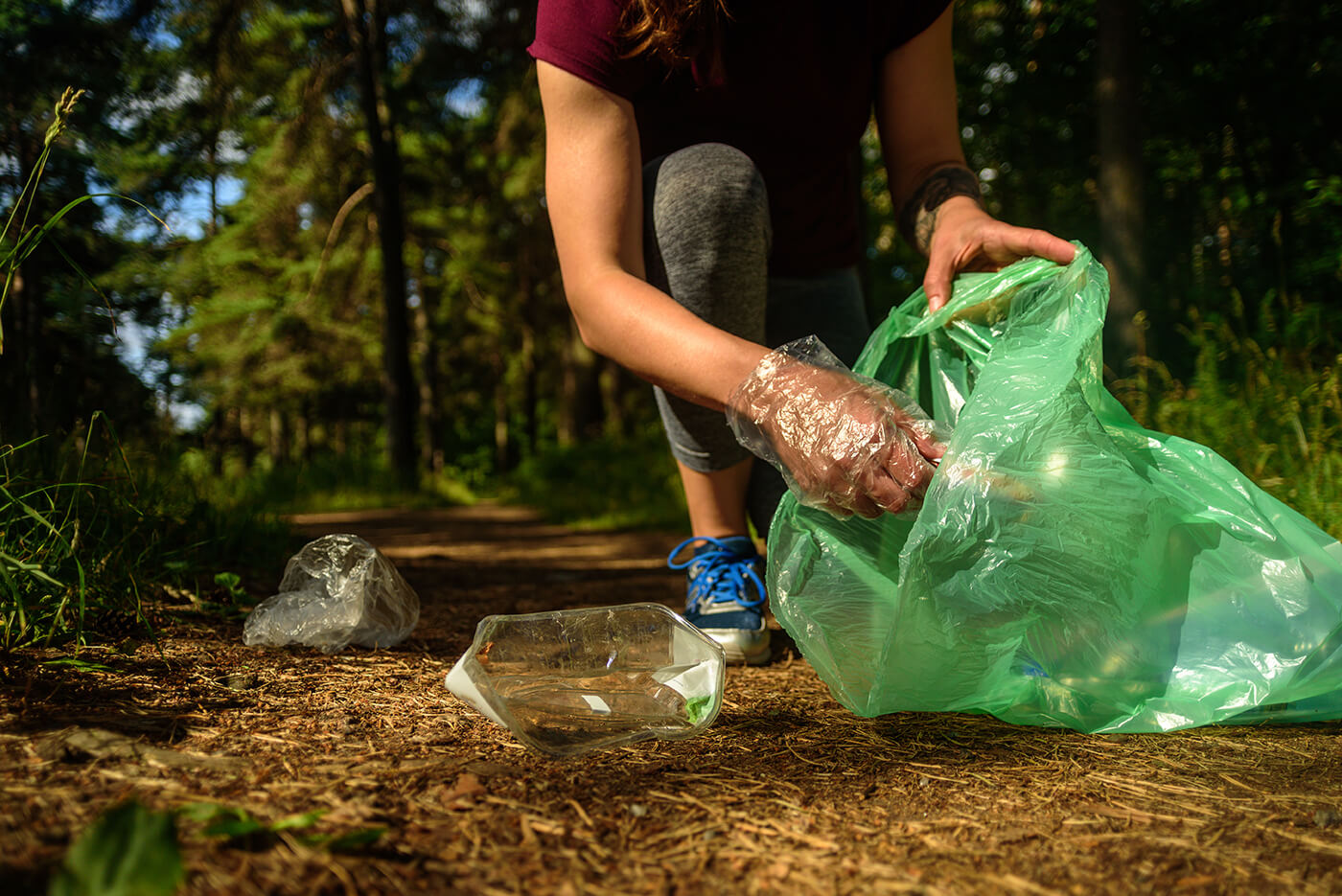
To go a step further, you can even bring along some trash bags and gloves to pick up any litter that you see while hiking. Not only does this help us do good for Mother Nature, it also makes for a great workout!
4. Kranji Marshes
Along the north-western shore of Kranji Reservoir lies Kranji Marshes, a rustic freshwater marshland spanning the size of 60 football fields. This unique sanctuary covers a range of habitats including a freshwater marsh, woodland and grassland. Here, it is home to over 200 species of wild residents as well as a rich variety of flora and fauna – a promising treat for any visitors!
If you’re feeling up for it, climb to the top of the Raptor Tower to enjoy a brilliant bird’s eye view of the surrounding marshes. Between the months of November to March, keep your eyes peeled for migratory species such as the Black Baza and Japanese Sparrowhawk, or spot nationally endangered species such as the Purple Swamphen.
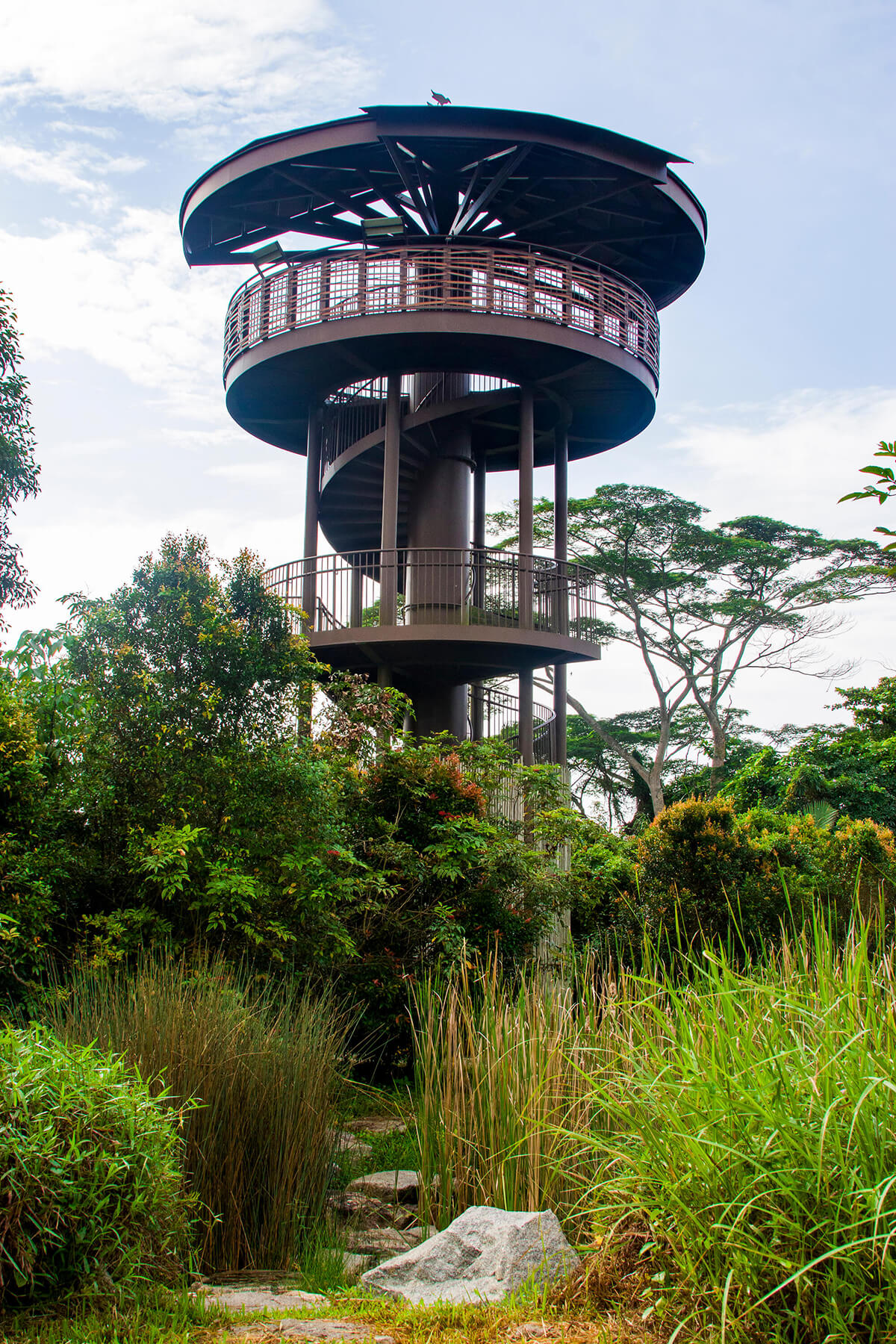
Click here for directions on how to get there.
Green Tip: Opt for eco-friendly sunscreens and insect repellents
Did you know? Sunscreen and insect repellents contain many chemicals that are harmful to our environment. While these chemicals may not have an immediate impact on the trails that you are hiking on, they do cause harm to the natural world in the long run when we wash them off and the water returns our water bodies. For sunscreen and insect repellent sprays, they are also notorious for containing CFCs that destroy the ozone layer.
As such, we would recommend opting for eco-friendly sunscreens and insect repellents such as Sigi Skin’s cruelty and paraben-free sunscreen and Three Star Brand’s Mozzie-Free insect repellent that is made from natural ingredients.
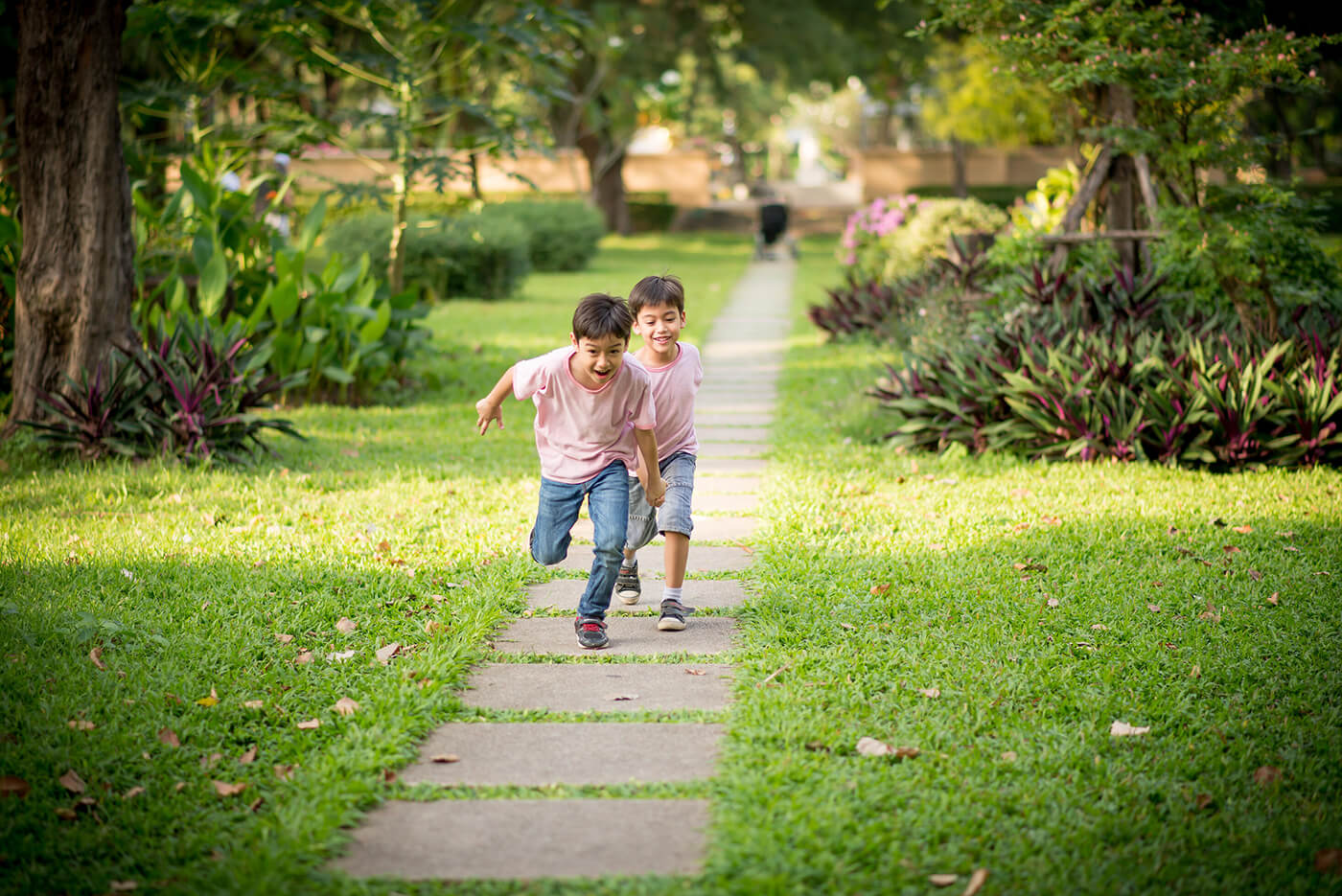
Image Credits: Nylon Coffee Roasters
As you embark on your hiking adventures during the end of year holidays, we hope that these simple tips will help you #PowerTheChange and contribute to the preservation of our green spaces. Every effort counts, and we can all make a difference to protect our precious floral wildlife and fauna for our future generations to enjoy!
Source: The Sustainability Project
References:
- 1 (2019) Climate Healers, Animal Agriculture is the Leading Cause of Climate Change – A Position Paper https://climatehealers.org/the-science/animal-agriculture-position-paper/
4 Top tips to help you embark for a zero-waste kitchen!

It is no secret that Singaporeans are well-known foodies. As we continue to stay home more amid dine-out restrictions, most of us may have tried our hands in whipping up sumptuous meals, and even baking, in the kitchen.
While cooking at home is typically a healthier and more sustainable alternative than ordering in or eating out, are we really reaping the eco-friendly benefits that home cooking brings? According to the Ministry of Sustainability and the Environment, food waste makes up about half of the average waste disposed of by each household in Singapore daily. Of the food waste, more than half could have also been prevented, with staples such as rice, noodles and bread being the most commonly wasted food items.
In conjunction with World Food Day on 16 October, how about challenging yourself to adopt a zero-waste kitchen, by leaving behind as little food and packaging waste as possible when cooking and dining this month?
There are many ways we can reduce waste in the kitchen and #PowerTheChange. Here, we’ve put together four easy tips to help get you started!
1. Make a weekly meal plan
Always catching yourself staring at your fridge while you ponder over what to cook for dinner? How about breaking the cycle by putting aside an hour during the weekends to plan out your meals for the following week? This will not only help you take stock of what you currently have in your kitchen, it also streamlines the ingredients you require!

For instance, if a whole chicken is sufficient to be spilt across meals for your family, you can plan different dishes that incorporates the entire chicken for the week to reduce any wastage. If your children have their own food preferences, you can also rope them in to brainstorm on what they’d like to have during the week to make meal planning more fun!
By doing so, this ensures that you do not buy any items that you already have in your kitchen, which saves you money and prevent food – especially perishables – from being unnecessarily wasted.
And while you’re at it, keep your loved ones healthy by making these meals a balanced and wholesome one too! Check out these easy guidelines by the Health Promotion Board, where they list down examples of nutrients and the recommended servings needed each day!
2. Purchase from zero-waste grocery stores
In recent years, Singapore has seen a rise in zero-waste grocery stores that offer everything from pasta to tea leaves and soy sauce, sans the plastic packaging seen in regular grocery chains. At these stores, shoppers are encouraged to bring their own reusable containers and fill them up with the groceries they’d like to purchase.
Besides the benefit of reducing the amount of plastic waste generated, it also allows you the flexibility to purchase as much or as little as you need, minimising the amount of food wasted! In addition, these stores, such as Unpackt and Eco.Le, usually source from eco-conscious and socially responsible suppliers, which promises that you’re supporting meaningful causes through your buys.
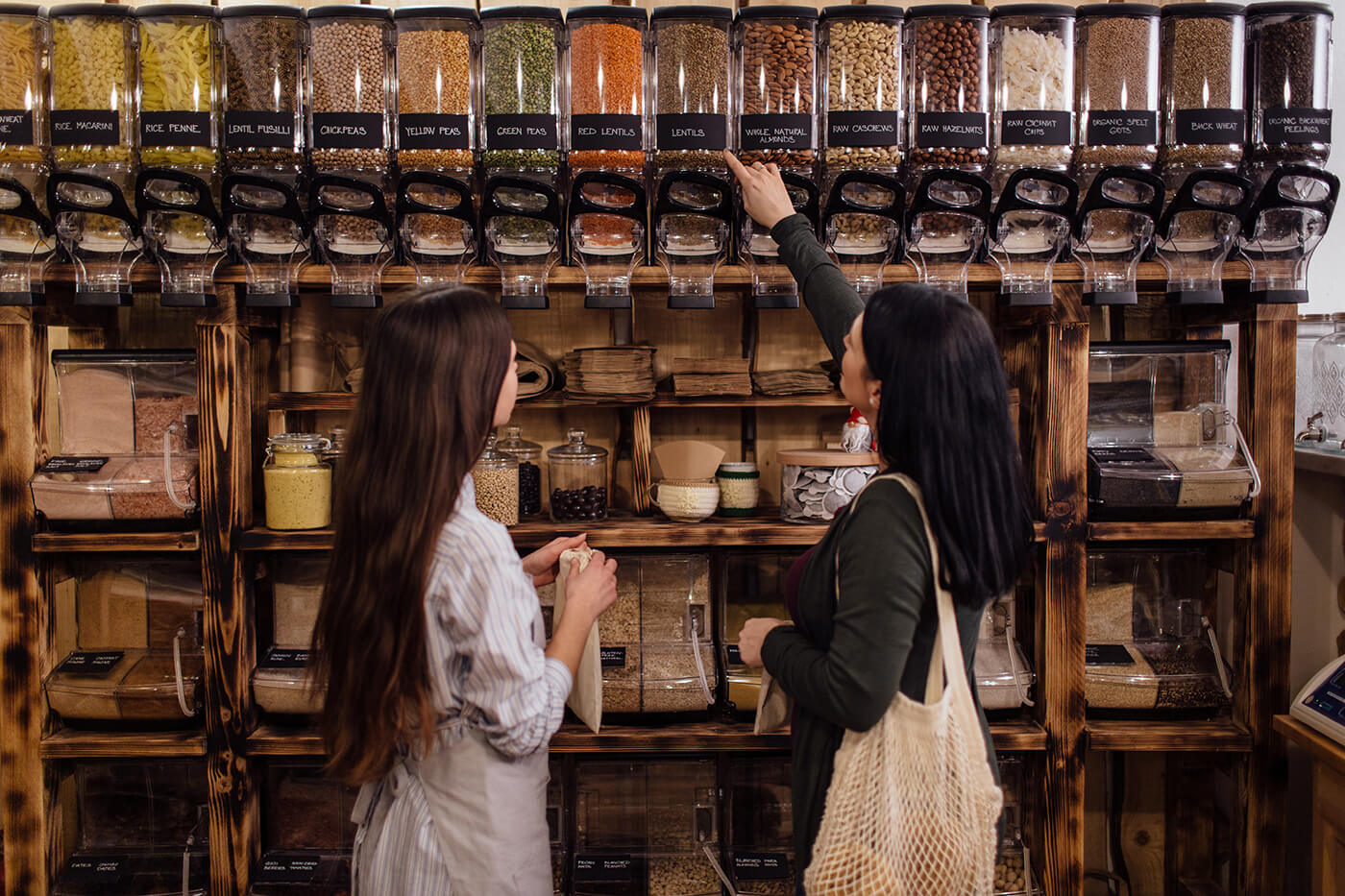
If you’d like to go a step further and go green for your kitchen cleaning products as well, some of these stores also have eco-friendly dishwashing liquid and biodegradable dishwashing sponges!
3. Try growing your own fresh produce
Contrary to popular belief, you do not actually need a lot of space or even a particularly green thumb when growing fresh produce from home! For fruits and vegetables such as cherry tomatoes, chilli peppers and kangkong, they fit perfectly in small spaces (perfect for HDB-living) and thrive under abundant sunlight and the sweltering Singapore heat.
Growing your own produce allows you to harvest the amount you need, instead of purchasing an entire packet from the grocery store and only utilising a portion of it, which would lead to unnecessary food waste. In addition, the process of growing your own produce also deepens the appreciation you have with food, thereby encouraging you to finish consuming every portion to reduce wastage.
Interested to build your little home garden but no idea where to begin? Check out our #ChangeMaker Cultivate Central’s upcoming talk about how you can kick start your home gardening journey!
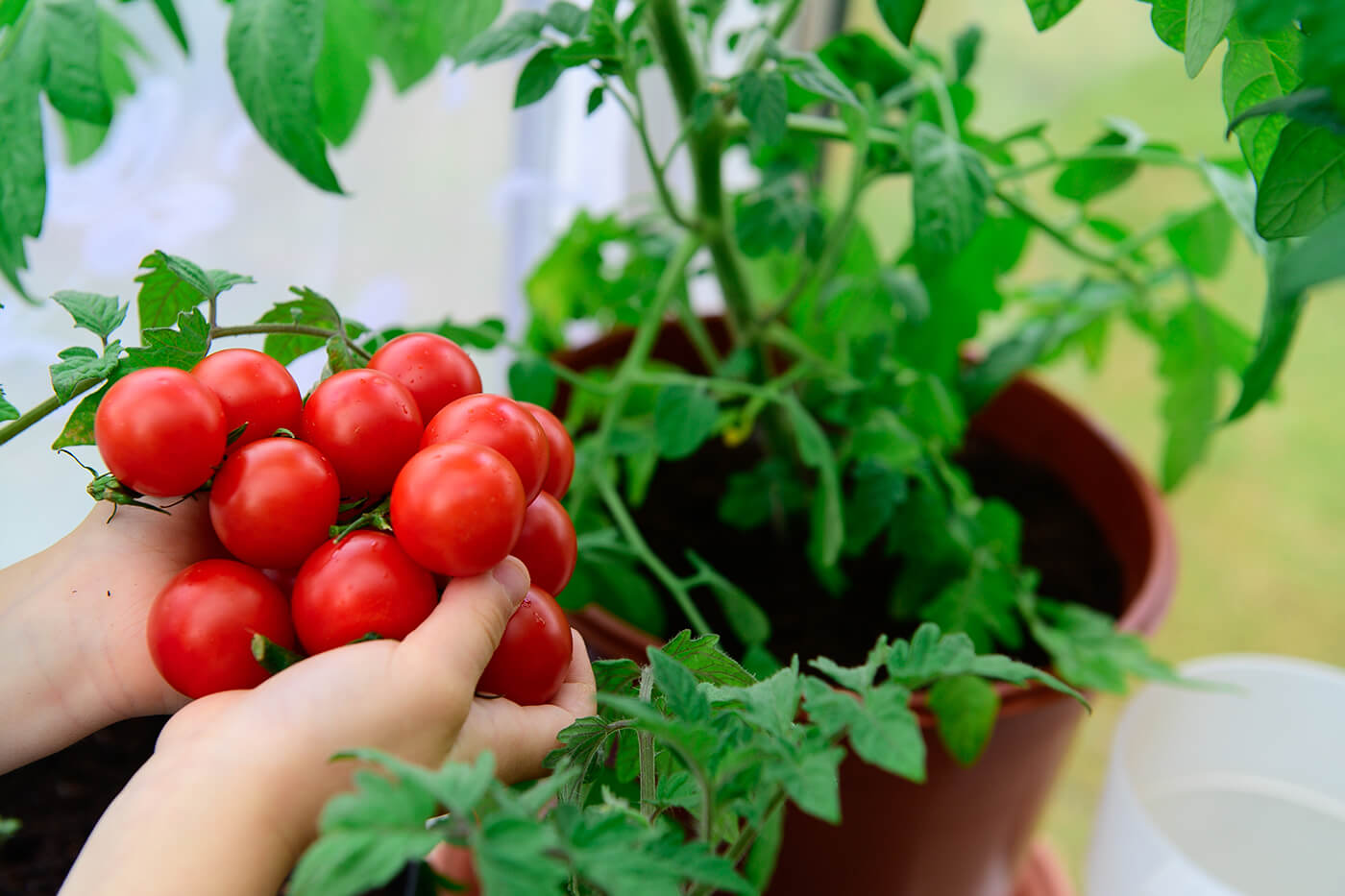
4. Composting any leftover food scraps
A key element of zero-waste kitchen is to use every part of your ingredient, including the leftover food scraps. What can you do with these food scraps, one might ask. How about composting these to create a nutritious fertiliser for your plants or fresh produce; talk about a true circle of life!
With composting, you will also help in keeping these food waste out of the landfill where it is typically broken down by micro-organisms in the absence of oxygen and emits methane, a type of greenhouse gas that contributes to global warming. According to a study by Oxford University, it was found that food wastage was responsible for approximately 6% of global greenhouse gas emissions!
To start, all you need is a bin with a lid, watering can, gardening fork, soil and some dried leaves. You can also check out Cultivate Central’s full composting guide here for more details!
As we celebrate World Food Day, let us take some time to be more mindful in purchasing only what we need and making a conscious effort to finish our meals to reduce food wastage. With each little step, we can together #PowerTheChange for a greener future!
Image Credits: Nylon Coffee Roasters
Source: The Sustainability Project
References:
- 1 (2019) Climate Healers, Animal Agriculture is the Leading Cause of Climate Change – A Position Paper https://climatehealers.org/the-science/animal-agriculture-position-paper/
